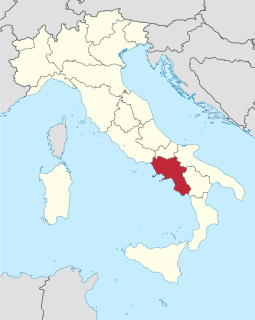
Campania is a region in Southern Italy. As of 2018, the region has a population of around 5,820,000 people, making it the third-most-populous region of Italy; its total area of 13,590 km2 (5,247 sq mi) makes it the most densely populated region in the country. Located on the Italian Peninsula, with the Mediterranean Sea to the west, it includes the small Phlegraean Islands and Capri for administration as part of the region.
Luigi Rossi was an Italian Baroque composer. Rossi was born in Torremaggiore, a small town near Foggia, in the ancient kingdom of Naples and at an early age he went to Naples. There he studied music with the Franco-Flemish composer Jean de Macque who was organist of the Santa Casa dell’Annunziata and maestro di cappella to the Spanish viceroy. Rossi later entered the service of the Caetani, dukes of Traetta.

Charles III was King of Spain (1759–1788), after ruling Naples as Charles VII and Sicily as Charles V (1734–1759). He was the fifth son of Philip V of Spain, and the eldest son of Philip's second wife, Elisabeth Farnese. A proponent of enlightened absolutism, he succeeded to the Spanish throne on 10 August 1759, upon the death of his half-brother Ferdinand VI, who left no heirs.

The Kingdom of Naples comprised that part of the Italian Peninsula south of the Papal States between 1282 and 1816. It was created as a result of the War of the Sicilian Vespers (1282–1302), when the island of Sicily revolted and was conquered by the Crown of Aragon, becoming a separate Kingdom of Sicily. Naples continued to be officially known as the Kingdom of Sicily, the name of the formerly unified kingdom. For much of its existence, the realm was contested between French and Spanish dynasties. In 1816, it was reunified with the island kingdom of Sicily once again to form the Kingdom of the Two Sicilies.
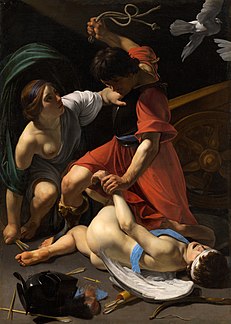
The Caravaggisti were stylistic followers of the 16th-century Italian Baroque painter Caravaggio. His influence on the new Baroque style that eventually emerged from Mannerism was profound. Caravaggio never established a workshop as most other painters did, and thus had no school to spread his techniques. Nor did he ever set out his underlying philosophical approach to art, the psychological realism which can only be deduced from his surviving work. But it can be seen directly or indirectly in the work of Rubens, Jusepe de Ribera, Bernini, and Rembrandt. Famous while he lived, Caravaggio himself was forgotten almost immediately after his death. Many of his paintings were reascribed to his followers, such as The Taking of Christ, which was attributed to the Dutch painter Gerrit van Honthorst until 1990. It was only in the 20th century that his importance to the development of Western art was rediscovered. In the 1920s Roberto Longhi once more placed him in the European tradition: "Ribera, Vermeer, La Tour and Rembrandt could never have existed without him. And the art of Delacroix, Courbet and Manet would have been utterly different". The influential Bernard Berenson stated: "With the exception of Michelangelo, no other Italian painter exercised so great an influence."

Jusepe de Ribera was a Spanish-Italian Tenebrist painter and printmaker, also known as José de Ribera and Josep de Ribera. He also was called Lo Spagnoletto by his contemporaries and early writers. Ribera was a leading painter of the Spanish school, although his mature work was all done in Italy.
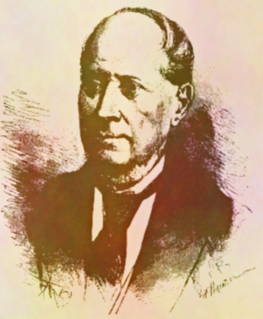
Luigi Palmieri was an Italian physicist and meteorologist. He was famous for his scientific studies of the eruptions of Mount Vesuvius, for his researches on earthquakes and meteorological phenomena and for improving the seismograph of the time.
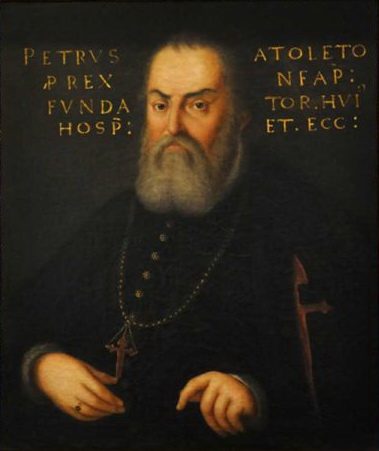
Pedro Álvarez de Toledo y Zúñiga, jure uxorisMarquis of Villafranca del Bierzo was a Spanish politician. The first effective Spanish viceroy of Naples, in 1532–1552, he was responsible for considerable social, economic and urban change in the city and southern Italian kingdom, in general.

Pietro Bernini was an Italian sculptor. He was the father of one of the most famous artists of Baroque, Gian Lorenzo Bernini. as well as the sculptor-architect Luigi Bernini.
Events from the year 1656 in art.
The Battle of Bitonto was a Spanish victory over Austrian forces near Bitonto in the Kingdom of Naples in the War of Polish Succession. The battle ended organized Austrian resistance outside a small number of fortresses in the kingdom.
Events from the year 1700 in art.
Events from the year 1611 in art.
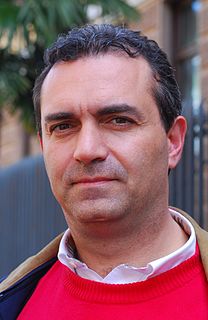
Luigi de Magistris is an Italian politician and a former prosecutor, currently the mayor of Naples.
Luigi Giuliano is a former Italian Camorrista who was the boss of the powerful Giuliano clan, based in the district of Forcella, Naples. He had multiple nicknames including "'o rre" and "Lovigino", which is an amalgamation of Luigi and love. In 2002, he decided to collaborate with Italian law enforcement and became a pentito, a co-operating witness against organised crime.
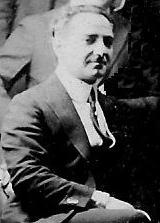
Luigi Scinti Roger was an Italian composer, who emigrated to New York in 1910, and composed music mainly for Italian immigrants in United States.
Coda is a surname. Notable people with the surname include:

Luigi De Filippo was an Italian actor, stage director and playwright.











